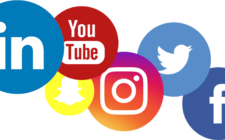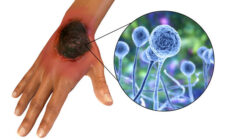
The Internet of Things (IoT) refers to the objects—“things”—that are embedded with sensors, software, and other technologies for the purpose of connecting and exchanging data with other devices and systems through the internet, which allows these objects to collect and share data. In simple terms, IoT is the concept of connecting devices used day-today to the internet and enabling them to communicate with each other and with humans.
Smart home appliances such as thermostats and lighting systems, to wearable fitness trackers used for step counts and calorie burn counts and industrial equipment are the devices that uses IoT technology. IoT devices often incorporate sensors, cameras, microphones, and other data collection tools that allow them to gather and transmit data about their environment or user behavior.
The applications and services a wide range of IoT technology is enabled, from home automation and healthcare monitoring
to smart transportation systems and industrial automation. By leveraging the power of the internet and cloud computing, IoT devices can provide real-time data and insights that can help individuals and organizations make better decisions, improve efficiency, and enhance safety and security.

The key ingredients of an IoT system include:
Devices: These are the physical objects or devices that are connected to the internet. They are usually the objects like thermostats, light bulbs, and door locks to more complex systems like industrial machinery and medical device which we use in day today life.
Sensors and Actuators: IoT devices are equipped with various sensors that collect data from the environment, such as temperature, humidity, motion, and location. Actuators, on the other hand, allow devices to act accordingly based on the received data, such as turning on/off, adjusting settings, or triggering an alarm.
Connectivity: IoT devices use different communication technologies to connect to the internet and other devices. This includes Wi-Fi, Bluetooth, cellular networks, Zigbee, and others. The choice of connectivity depends on factors like range, power consumption, data transfer speed, and cost.
Data Processing: Once the IoT devices collect data from the environment, it is processed and analyzed either locally on the device or in the cloud. This involves extracting meaningful insights, making decisions, and triggering appropriate actions based on the analyzed data.
Cloud Infrastructure: The cloud plays a crucial role in IoT systems as it provides storage, processing power, and scalable infrastructure to handle large volumes of data generated by IoT devices. Cloud platforms enable data storage, analytics, and integration with other applications and services.
Applications and Services: IoT applications and services utilize the data collected from IoT devices to provide various functionalities and benefits. These can range from smart home automation, energy management, and asset tracking to industrial automation, healthcare monitoring, and predictive maintenance.
The potential of IoT is vast and has applications in various domains, including smart cities, agriculture, healthcare, transportation, manufacturing, and more. It has the potential to improve efficiency, automate processes, enhance ecision-making, and create new business models. However, it also raises concerns about privacy, security, and data management, which need to be addressed to ensure the successful and responsible deployment of IoT systems.
Big and getting bigger — the IoT are already more established and more connected things with human than people in the world making everything systamatic and digitalised.





